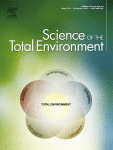Ver ítem
- xmlui.general.dspace_homeCentros e Institutos de InvestigaciónCIRN. Centro de Investigaciones de Recursos NaturalesInstituto de Recursos BiológicosArtículos científicosxmlui.ArtifactBrowser.ItemViewer.trail
- Inicio
- Centros e Institutos de Investigación
- CIRN. Centro de Investigaciones de Recursos Naturales
- Instituto de Recursos Biológicos
- Artículos científicos
- Ver ítem
Bird occupancy in intensively managed agroecosystems under large-scale organic and conventional farming in Argentina: A multi-species approach
Resumen
Several studies in European and North American agroecosystems conclude that organic farming benefits birds compared to conventional farming. Nevertheless, there are some biases toward these geographic regions and farm size. Argentinian agroecosystems are particularly homogeneous with large arable fields and sparse uncultivated field margins (i.e. large-scale homogenous cropping systems). In Argentina only 0.55% of the total farmland is under organic
[ver mas...]
Several studies in European and North American agroecosystems conclude that organic farming benefits birds compared to conventional farming. Nevertheless, there are some biases toward these geographic regions and farm size. Argentinian agroecosystems are particularly homogeneous with large arable fields and sparse uncultivated field margins (i.e. large-scale homogenous cropping systems). In Argentina only 0.55% of the total farmland is under organic farming. Thus, our aims were to assess differences in bird occupancy between organic versus conventional farming regimes, and whether bird occupancy varied in relation to annual crop proportion in both farming regimes in central Argentina agroecosystems. We surveyed 156 points in farms under conventional and 154 in organic farming regimes during two bird-breeding seasons. We used multi-species occupancy models with a Bayesian approach to estimate bird occupancy. We observed that the type of farming regime (organic in relation to conventional) had a weak effect on avian occupancy, varying by species and groups. Probability of occupancy was higher for a few insectivorous and omnivorous species but lower for carnivores in organic farms in relation to conventional ones. The proportion of annual crops was positively correlated with occupancy of an insectivore aerial forager, some insectivore foliage gleaners, a granivore, and some omnivorous species in organic farms, but not conventional farms. This work contributes to reducing geographic and small-scale heterogeneous cropping system biases in the avian agroecological literature. Our results, together with future studies needed to assess landscape configuration and composition, and resource availability for birds in each farming regime, will allow the evaluation of organic farming as a tool for the conservation of bird species in large-scale homogeneous cropping systems in temperate regions.
[Cerrar]

Autor
Contreras, Facundo;
Goijman, Andrea Paula;
Coda, José Antonio;
Serafini, Vanesa N.;
Priotto, Jose Waldemar;
Fuente
Science of The Total Environment 805 : 150301 (January 2022)
Fecha
2021-09
Editorial
Elsevier
ISSN
0048-9697
1879-1026
1879-1026
Documentos Relacionados
Formato
pdf
Tipo de documento
artículo
Proyectos
(ver más)
INTA/PNNAT-1128053/AR./Evaluación y manejo de la biodiversidad y sus servicios ecosistémicos de interés para la producción agropecuaria.
Palabras Claves
Derechos de acceso
Embargado
 Excepto donde se diga explicitamente, este item se publica bajo la siguiente descripción: Creative Commons Attribution-NonCommercial-ShareAlike 2.5 Unported (CC BY-NC-SA 2.5)
Excepto donde se diga explicitamente, este item se publica bajo la siguiente descripción: Creative Commons Attribution-NonCommercial-ShareAlike 2.5 Unported (CC BY-NC-SA 2.5)

